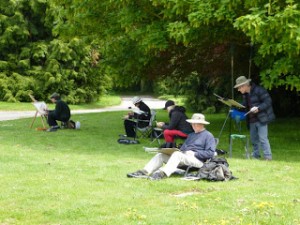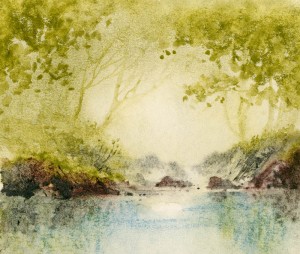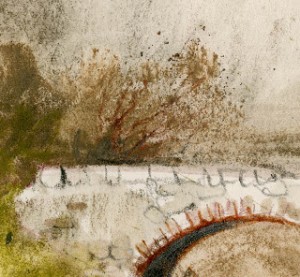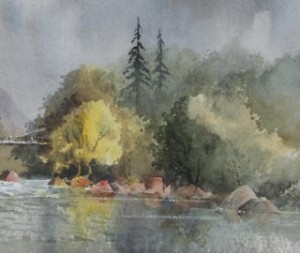Trying to maintain a regular blog is pretty much impossible for me, especially at the moment with so much happening. There simply isn’t enough time to do all I want. Since the previous post Jenny and I have joined in a major protest in Mid Wales at the start of a public inquiry into five wind farms which, if given the go-ahead will industrialise vast swathes of beautiful landscape and trash the main economy based on tourism. Following that I demonstrated in a slightly different style at Patchings Art Festival in the St Cuthberts Mill and Search Press marquees, and without a break continued to Derbyshire to run a painting course at Derbyshire Arts.
Hardly back from Derbyshire and I had a rather significant birthday party, which unfortunately was interrupted by the local health and safety officials as pictured above. Nevertheless, much fun was had by all concerned, and nobody got too wet. This interlude was then followed by a spot of filming for another project, until at last! – yesterday I could disappear off into the hills and relax for the first time in a few weeks.
There’s been some marvellous weather for working out of doors lately, and long may it continue. I have a number of sketching kits, ranging from large expedition ones to pocket-sized pads with a pencil or two plus an aquash brush – it really is worth taking a few materials with you, plus a camera, to catch a fascinating composition while you are out. If you feel embarrassed sketching out of doors then hide your sketchbook in a copy of the Beano or other comic and pretend to be doing the crossword……enjoy the summer.


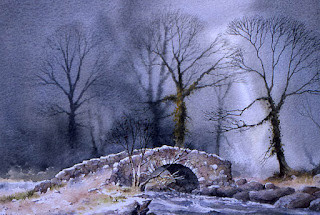 This watercolour of Hisley Bridge on the edge of Dartmoor illustrates the effectiveness of painting masking fluid over the bridge before doing any painting, then applying very fluid washes wet-into-wet for the background, bringing the wash down over the bridge with impunity, as you can lift off the masking fluid once it has dried and hey presto! the bridge appears again. The sense of mood has been accentuated by limiting the background colours in the wet-into-wet wash, with warmer colours being applied in the bridge and foreground.
This watercolour of Hisley Bridge on the edge of Dartmoor illustrates the effectiveness of painting masking fluid over the bridge before doing any painting, then applying very fluid washes wet-into-wet for the background, bringing the wash down over the bridge with impunity, as you can lift off the masking fluid once it has dried and hey presto! the bridge appears again. The sense of mood has been accentuated by limiting the background colours in the wet-into-wet wash, with warmer colours being applied in the bridge and foreground.